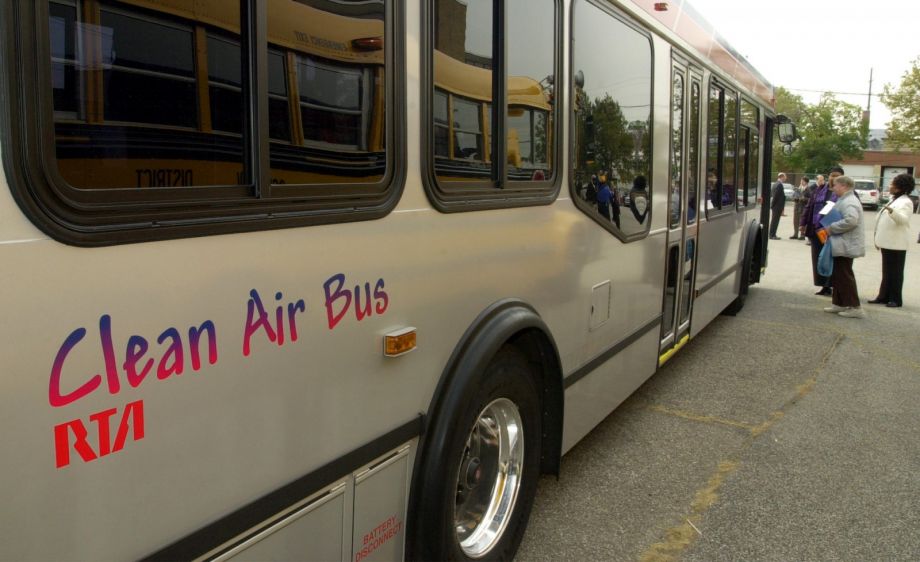Are You A Vanguard? Applications Now Open
Thousand Lantern Park System in Nanhai, Foshan, China. (Credit: Urban Land Institute)
This is your first of three free stories this month. Become a free or sustaining member to read unlimited articles, webinars and ebooks.
Become A MemberAt the United Nations COP21 climate talks in Paris last week, Al Gore was in high rhetorical form in celebrating the talks’ apparently newfound sense of purpose.
“Some people have said to me ‘There has been a series of global conferences — what’s different about this one?’” Gore said. “Well there was an American poet that came from a business community called Wallace Stevens. He once wrote that ‘after the final no comes a yes.’ When people realize that the fundamental choice is between what’s right and what’s wrong, finally there comes a yes.”
The choice of venue for Gore’s speech — the launch of the UN climate action agenda for cities — was significant. Because when it comes to the role of cities in international climate change negotiations, new ground has unquestionably been broken over the last two weeks. The final agreement adopted on Saturday is the first accord committing all the world’s countries to reducing greenhouse emissions to help slow the pace of climate change. It sets a goal of limiting the planet’s temperature rise to below 2 degrees Celsius, or 3.6 degrees Fahrenheit, above preindustrial levels. Scientific research has concluded that warming beyond this point will unleash the most severe impacts of global warming, including more frequent and destructive storms, widespread water shortages, famine, extreme flooding and dramatically rising sea levels. But while the agreement commits its 196 signatories to cut emissions and report progress on a national level, at least one-third of the carbon budget remaining to stay under 2 degrees Celsius is in the control of cities and local governments, and everyone at COP21 seemed to know it. Session after session attempted to thrash out frameworks to make climate action at city and regional levels more viable. Talks ended over the weekend with more than 7,000 cities and regions committed to slashing carbon emissions through their own local actions, according to the UN. Collectively, these communities represent a fifth of the world’s population.
“Everyone knows subnationals have moved faster than governments,” the former U.S. vice president said. “Here there is a critical mass of leaders comparing notes — in some cases they’ve outdone each other to make ever more impressive commitments.”
Gore is right that the cumulative power of arguments for climate action may indeed have finally proved irrefutable. But now with 196 nations committed to reducing carbon emissions, the question is how, and for the first time, there is international consensus on the need for cities and municipalities — subnational actors, in UN lingo — to play a leading role in finding the answers.
“Acting on climate change is not just about a treaty, it is about all of us: cities, regions, subnationals,” said Jerry Brown, former Oakland mayor and the governor of California, one of the signatories of the action agenda.
The UN roadmap for cities that Gore and Brown were celebrating in Paris, the Lima-Paris Action Agenda (LPPA), is essentially a playbook for cities with four primary objectives. The first goal is to increase the number of cities and regions implementing action plans. Next is building resilience, especially in areas with more vulnerable populations. Third, the action plan strives to increase the flow of financial support for urban climate action and encourage the deployment of innovative economic tools. Finally, it supports multi-party initiatives among different levels of governance, such as cooperation between national and local governments.
These four points may sound like a generalized vow to just do better. They are nonetheless at the heart of what’s needed. Developing new ideas to combat climate change may be important, but currently more vital is a framework through which to promote and coordinate efforts globally.

People tour a new clean air bus in Cleveland. (AP Photo/Tony Dejak)
The movement toward this coordinated global network was on full display in Paris. Only a year and a half old, the Compact of Mayors, a global coalition of nearly 400 mayors launched in 2014 by UN Secretary-General Ban Ki-moon and his special envoy for cities and climate change, Michael Bloomberg, played a vital role in the Climate Summit for Local Leaders hosted by Paris Mayor Anne Hidalgo and Bloomberg at Paris City Hall. Leading up to COP21, the organization developed a system for mentoring and accrediting over 382 cities in their climate actions. (In August, Bloomberg recognized Rio de Janeiro as its first fully complaint city.) Meanwhile, C40 Cities, a decade-old climate leadership group representing 82 of the world’s largest cities, came to Paris with a new report establishing a systematic framework for understanding the obstacles to city-level climate action. The EU-based Covenant of Mayors, another climate action initiative for cities and regions, has extended its signatories far beyond Europe, as testified to by the geographically diverse panel of its COP21 side event. A Global Alliance for Building and Construction intended to help pilot the construction industry’s efforts to restrict warming to below 2 degrees Celsius is an initiative likely to have a major effect on cities.
These networks aren’t mere talking shops, they are places where cities are able to compare practices, pool expertise and resources and make collective commitments that don’t necessarily require national rubber-stamping and can lead to tangible impacts. Take, for instance, a campaign led by C40 to increase the number of low-emission electric buses on city streets. By recruiting 24 cities to commit to buying a combined 40,000 new electric buses by 2020, the coalition was able to negotiate a promise from bus manufacturers to lower the price of the buses and meet the market demand.
Not only are these networks growing, they are also collaborating more. At COP21, the Compact of Mayors and the Covenant of Mayors announced a new partnership. The collaboration holds the potential to further progress on creating effective global standards for measuring progress.
Tshwane, South Africa, is an urban region already feeling the challenges of climate change. A metropolitan municipality of 2.9 million that contains the city of Pretoria, it is located in an already arid landscape where droughts, floods and extreme temperatures are becoming more common. The metro area itself spills across a vast expanse of car-dominated suburbs, open land and dense informal settlements, complicating the goal of sustainability. But as Tshwane Mayor Kgosientso Ramokgopa explained at COP21, the area’s sprawling layout is not just a logistical problem. It’s an example of how apartheid-era planning continues to be a hurdle in building a more sustainable, democratic South Africa.
“One of the significant challenges that we’re still facing in the post-apartheid city is the reorganization of space, and the preeminent question that has been facing us is how to undermine sprawl,” Ramokgopa said. “In our city space, the poor and majority black people were on the periphery, so the primary challenge is to bring them closer to centers of economic production and privilege.”When unsustainable urban sprawl represents not just past planning choices but a firmly entrenched social hierarchy, the barriers to climate action are only likely to be greater. Tshwane is now working to reduce carbon emissions and improve mobility in the city with a new bus rapid transit system. The new buses, which will run on compressed natural gas, are not only a way to reduce emissions and cut pollution, they also serve a social justice agenda by improving transportation access. As Ramokgopa suggests, building climate resilience in regions like these must go hand in hand with reducing poverty.
Other obstacles relate to the way cities are organized internally. Short mayoral terms can exacerbate the problem of city agencies not working together, creating a fragmented, piecemeal response to climate change. Many cities also struggle to build meaningful links among the scientific researchers who possess knowledge of the risks, civil society groups who can advocate for action and decision-makers.
Even in places like Tshwane, or flood-prone Shimla, India, where the symptoms of a warming planet can’t be ignored, efforts to rally the public around climate change action can fail without the right outreach and engagement.
“There must be political action so people can decide their fate, their future,” said Tikender Singh Panwar, deputy mayor of Shimla, India.
It will cost trillions of dollars to achieve the targets established by the COP21 agreement. The accord commits the international community to sending $100 billion a year in support for climate action to developing countries by 2020, with a commitment to more financial support in the future. But with the majority of the world’s population living in cities, much of the costs associated with greening infrastructure and other mitigation and adaptation efforts will be incurred in urban areas over the next few decades. It’s no surprise that money and how to get it dominated the conversation urban leaders were having at COP21.
A report from the Cities Climate Finance Leadership Alliance released during the talks highlighted the importance of getting more money transferred to cities from central governments and creating better frameworks for understanding the costs that cities could face as the planet warms. The alliance also recommended increased support for local financial institutions and urban lab networks to explore innovative funding models.
As Rachel Kyte, the World Bank’s vice president and climate change representative, underlined at the report’s press launch, the issue of financing climate action on a local level is so pressing that it requires action on a grand scale.
“Please understand that the fundamental financial health of cities will be absolutely fundamental to reaching Paris’ goals,” Kyte said. “We have to find ways to bridge the gap in urban climate finance.”Many of the steps the report recommends are partly underway but need to be extended. The Global Innovation Lab for Climate Finance, for example, has already created a new climate-action-funding observatory designed to build institutional knowledge and identify strategies for investments in low-emission, climate-resilient infrastructure. It also identifies, stress-tests and refines the design of innovative financial instruments for developing countries.
An example of this kind of scheme identified by the report is Mexico’s Ecocasa, a program founded in 2013 aimed at reducing emissions in the country’s housing sector. Ecocasa is already halfway toward its goal of financing 27,600 sustainable homes by 2019, a goal that would prevent a total of 1 million tons of CO2 emission. The program functions by providing sub-commercial rate loans to developers, something it is better placed to do than international financial institutions because of its regional knowledge and connections.
According to the Cities Climate Finance Leadership Alliance, Ecocasa’s “local presence makes it well suited to offering credit and mortgages to local borrowers and providing financing instruments for housing and infrastructure at prices that reflect their real risk.”
Even for the world’s wealthiest nations, financing adaptation and mitigation is an immense challenge. The alliance estimates that between $4.1 trillion and $4.3 trillion will need to be spent on urban infrastructure just to keep up with projected growth.
In North American cities, financial constraints could very well be the biggest impediment to action, according to C40. Obstacles in this area include gaps between the investment needed and the money actually available, as well as difficulties accessing funds to bridge that gap.
“We can raise the money, but if cities can’t access the money we have a problem,” said Kyte.
There is no guarantee that the accord signed on Saturday in Paris will meet its goal of protecting the planet from climate change’s most dire threats, but its unanimous approval means that at least the world’s nations agree on the need to work together to try. The need for cooperation and collaboration across borders is no less critical within nations.
According to C40 Cities’ “Potential for Climate Action” report, early three-quarters of challenges cities face when trying to take effective action on climate change require collaboration with national governments, the private sector and other actors.

Melbourne, Australia, is expanding its green space throughout the city. (Photo by Hassan Humayun on flickr)
Australia’s second city of Melbourne is an example of the value of collaboration — and the cost of its absence. In recent years, Melbourne has cultivated a reputation as a green beacon, initiating ambitious plans including one to increase the city’s tree canopy coverage from 22 to 40 percent by 2040. This move could reduce the city’s summer temperature by as much as 4 degrees Celsius, a game-changing move in a city where summer heat waves can push up mortality rates. But while the city has made important strides, progress was stymied by Australia’s former Prime Minister Tony Abbott’s resistance to climate resilience legislation.
“I’ll be blunt in saying it hasn’t been the greatest period recently for action in climate change space. Things are looking a little more optimistic, but we’re the only country in the world to remove a working carbon price,” said Wood. “If we don’t have a global price on carbon, we’re missing a massive part of the jigsaw.”
Likewise, in Belgium’s Ghent, efforts to curb pollution are stymied by national polices.
“Eighty percent of the industrial polluters in the Ghent area are controlled by national rather than local regulations,” Tine Heyse, deputy mayor of Ghent, said at a session run by the Covenant of Mayors. “Without pressure from central government, what we can do with them is limited.”

Ghent, Belgium, faces air pollution issues. (Photo by Worak on flickr)
In Melbourne, the way around Australia’s uncooperative former prime minister was collaboration with another partner — the private sector. Much like C40 with its clean bus campaign, the city built a market for renewable energy based on its own municipal purchasing power.
“Australia has some of the dirtiest coal in the world — brown coal — and they sell it to China, so the national government wasn’t super-keen on going renewable,” explained Seth Schultz, director of research at C40 Cities.
“Melbourne overcame by bringing together a group of large energy consumers and purchasers … . They said, ‘this is what the city owns, where we can dictate terms’ then they took private sector landowners with large numbers of buildings and with that, they created a consortium of consumer purchasers for the city. They used this combined purchasing power to create sufficient demand for renewables to incentivize the private sector to invest in beginning to supply it.”
In many ways, Melbourne’s experience represents a coming-of-age of the urban sustainability movement. The private sector is listening to cities and responding. Now it’s up to cities and national governments to continue the conversations that began at COP21 and continue the evolution.
“The commentary for a long time has been ‘nations talk and cities act.’ We’ve been part of that dialogue too. That’s changing now,” said Schultz. “National governments are coming to organizations like ours and saying ‘help us. We get it.’ I want to change the trajectory of the conversation. Cities are a vehicle and everyone should be getting in that vehicle and joining in for the ride.”
This piece is part of a series of reported articles and op-eds that Next City is publishing related to preparations for the United Nations’ Habitat III in Quito, Ecuador, in October 2016. With a grant from the John D. and Catherine T. MacArthur Foundation, we’re covering the critical issues at stake on the road to creating a “New Urban Agenda,” and hosting events at PrepCom III in Surabaya, Indonesia, in July 2016, and in Quito.

Feargus O’Sullivan is a London-based writer on cities. He contributes regularly to Next City, CityLab and The Guardian.

20th Anniversary Solutions of the Year magazine